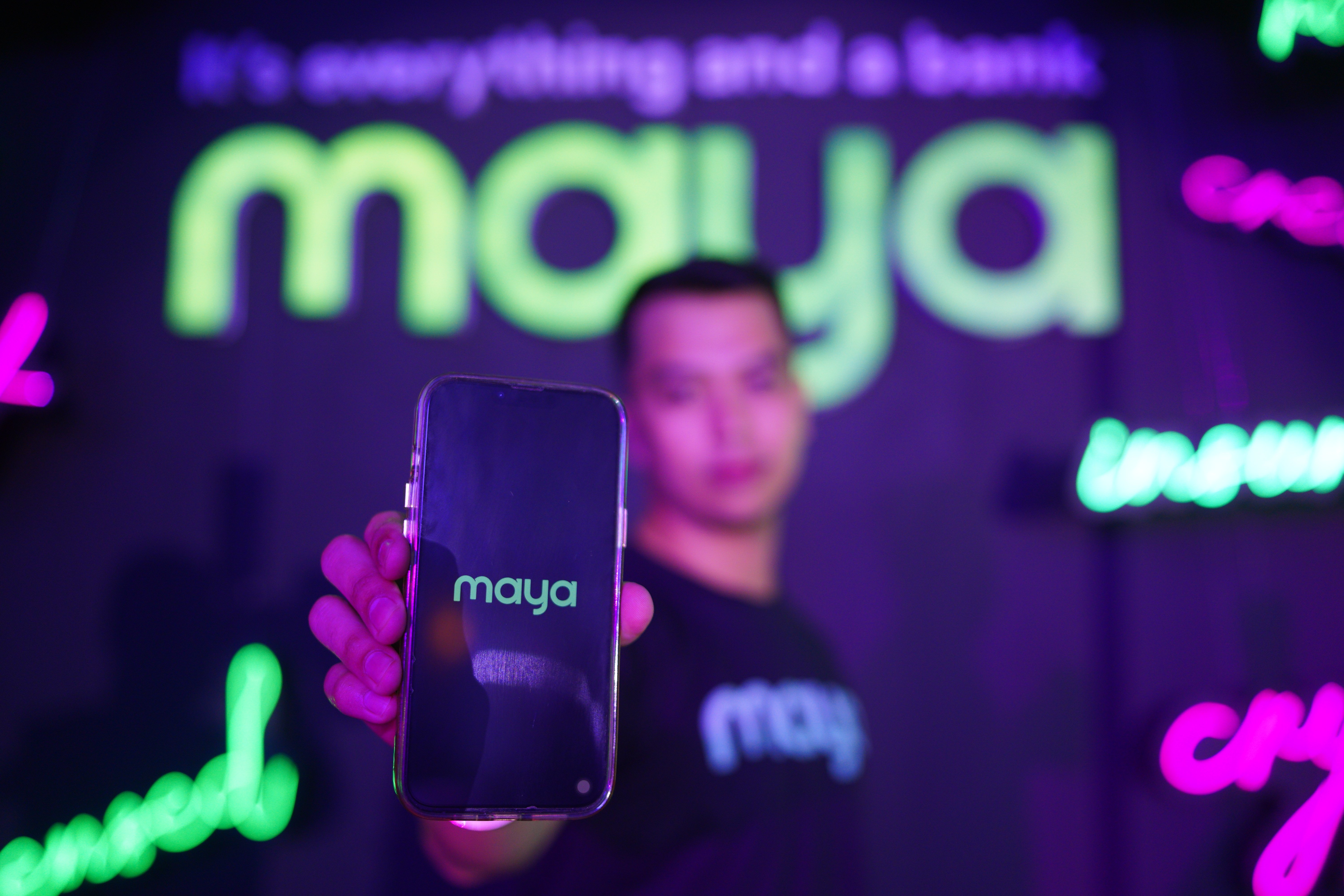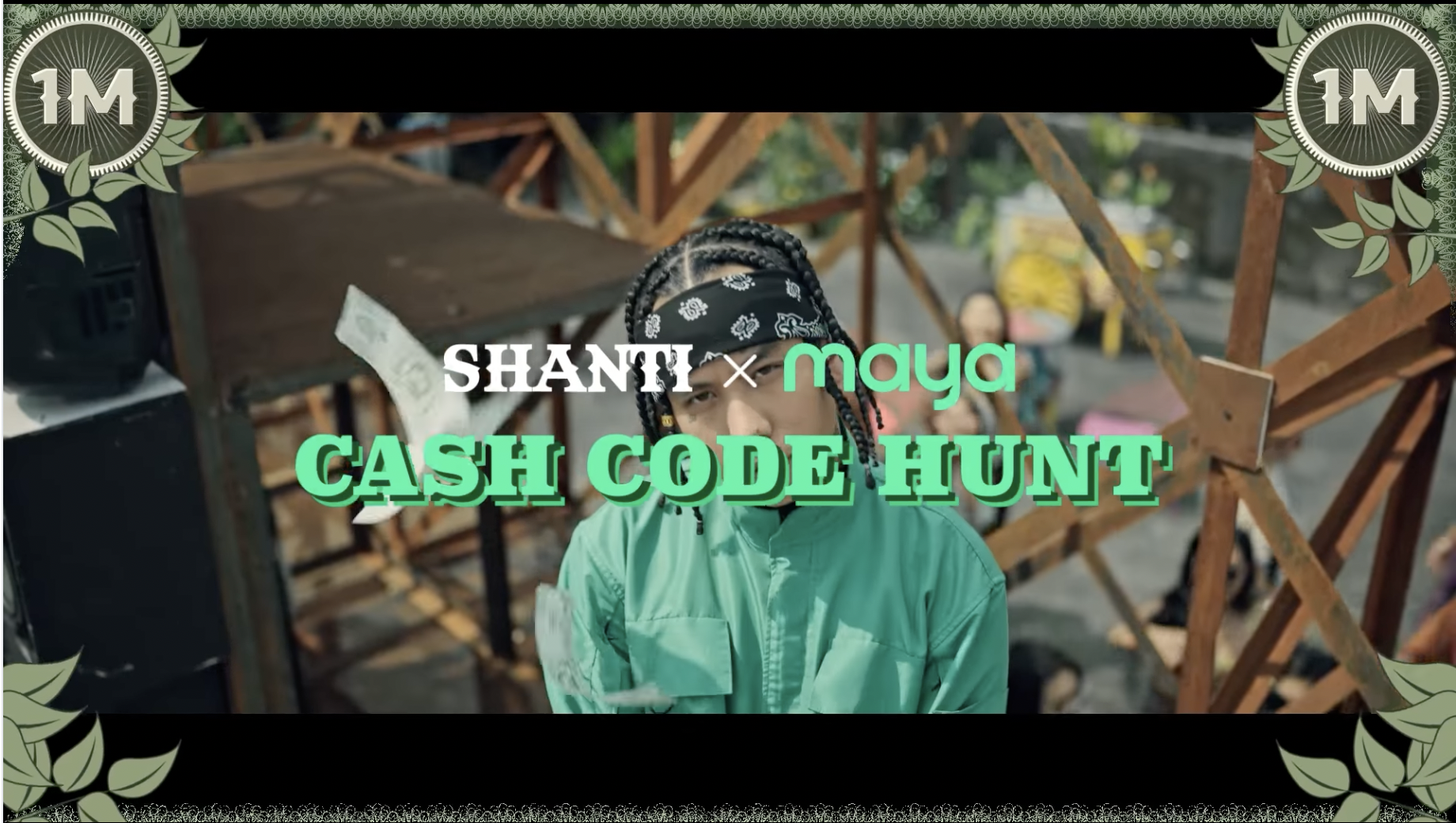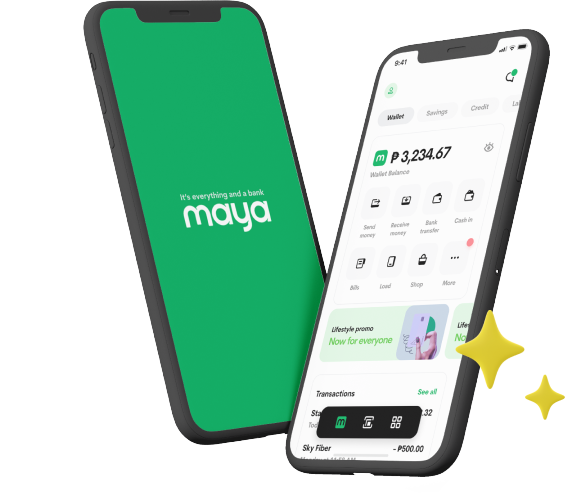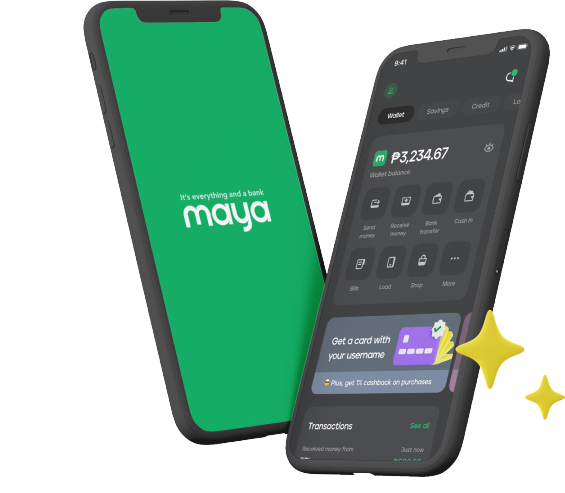We put Maya to the test in Japan and discovered the many strange and wonderful things we can do with it.
Text and photos by: Pam Pastor – First of a series. Read Part 2. Read Part 3.

“One more?” the robot asked.
“Uh, yeah,” I replied, not sure if he can really hear me.
Welcome to Tokyo, where I went on a quest with Maya to explore the strangeness the city has to offer.
Maya is a mobile wallet that provides users with a virtual Visa or MasterCard that they can reload and use for shopping online. (You can use it anywhere that accepts a Visa or Mastercard.) Users can also choose to acquire a physical Visa card which works for offline purchases even abroad.
But my love affair with Maya started even before the trip, when I realized how convenient it is to use this prepaid online payment app for settling my bills. No need to suffer through lines, it’s all done on my phone with just a few taps. (No wonder it’s the most downloaded Finance app on the Philippine Play store.)
Booking my plane tickets with my mobile wallet was just as easy. I used my virtual card on the Cebu Pacific website with no hassle. (Next time there’s a seat sale, you don’t have to rely on your credit card-wielding friend’s luck—you can make your own booking with Maya.) Finding my temporary home in Japan took a little more effort. I’ve always wanted to stay in a capsule hotel so I opened the Agoda app. But the only ones available were for men.
I sighed and opened my AirBnB app. I was scrolling mindlessly while considering pulling a Mulan and pretending to be a dude so I can grab one of those capsules when a listing popped out at me: “Pikachu Pokémon Go! NEW!”
It was a Pikachu-themed room in Nerima, the most rural of Tokyo districts (and also the setting of “Ranma 1/2”). The room was cute, cheap ($21 a night), included free home and mobile Wi-Fi and I didn’t have to pretend to be a boy. Sold!

I typed in my Maya virtual card details, confirmed my booking and within minutes, I heard from my host Kotaro. “I’m looking forward to seeing you!”
Sorry, cash only
I flew to Tokyo armed with my Maya mobile wallet and physical card. I didn’t bring yen or dollars—I wanted to see how long I’d last cashless in Japan—a place where, Bloomberg declares, “Cash is still king.” The answer? Less than an hour.
Because when I tried to buy a Skyliner ticket so I can travel from Narita Airport to the city, the lady at the ticket booth said, “Sorry, cash only.”
Not a problem. My Maya card can be used to withdraw cash too. I headed to a nearby ATM and within seconds, I had yen in my hands.

I bought a Pasmo card for my train and bus rides.
But even though cash still rules in Japan, there are also moments when you need a card. I used my Maya card to buy a data SIM (my host said I needed Google Maps to find the apartment) and beside me were a mom and daughter from Manila who were trying to rent a pocket Wi-Fi unit with cash. “Sorry, you need a credit card,” the girl told them.
I train-hopped to Nerima, wrestled with my luggage across parks and streets and lines of adorable school children and finally made it to the apartment where Kotaro and seven Pikachus (including one that talks) were waiting for my arrival.
The next morning, I ventured just south of Tokyo, to Yokohama. My first stop was the Cup Noodles Museum (2-3-4 Shinko, Naka-ku, Yokohama; entrance fee is 500 yen, cash only), a temple of sorts to Momofuku Ando, founder of Nissin Food Products and the visionary who invented the world’s first instant ramen in 1958.

I stood in the Instant Noodles History Cube, gaped at the over 3,000 packages of instant ramen on display and tried to ignore my rumbling stomach. There are many things you can do at the Cup Noodles Museum—play at the Cup Noodles playground, visit a recreation of Momofuku’s work shed, be inspired by creative thinking boxes, eat at the Noodles Bazaar and shop for Cup Noodles merch. But the highlight of the visit for me was the My CUPNOODLES Factory where, for 300 yen, you can customize your own Cup Noodles by choosing your favorite soup and toppings.

I enjoyed it so much that when I saw the Chicken Ramen Factory, where you can knead and dry your own noodles, I immediately tried to sign up for it. “One please,” I said to the girl behind the counter.
“One person, no enter,” she said.
“What?” I asked, not sure if I was being shamed for being alone.
“One person, no enter,” she said, pointing to a part of the museum brochure that I couldn’t read—it was in Japanese. I opened my own English brochure and there it was, in black and white: “Reservations for one person are not permitted.”
Ouch. Apparently, sessions are conducted in pairs. I considered asking if I can pay for two people and enter alone but I decided to just move on.
I walked past Yokohama Cosmoworld and my growling stomach led me to Yokohama World Porters. I’m glad it did because inside, to my surprise, I found little Hawaii.
Little Hawaii
I couldn’t believe my eyes. At World Porters’ Hawaiian Town (2-2-1 Shinko, Naka-ku, Yokohama), you can find all kinds of Hawaiian delights—from coffee, ice cream, clothes and Tiki dolls to shaved ice and plates of Loco Moco and Kalua pig. The best part was Leonard’s malasadas, Portuguese-style doughnuts that have been a Honolulu staple since 1952. I grabbed a cinnamon one and wolfed it down. The only things missing were Boots & Kimo’s Macadamia Nut Pancakes and Liliha Bakery’s Coco Puffs. If I found them there, I might never have left.

I walked through a gorgeous park, pausing to play with dogs and watch people picnicking under sakura trees (“I am happy you could come here when some cherry blossoms were still good,” Kotaro later said to me). Then I got on the train to the Shin-Yokohama Raumen Museum (2-14-21 Shinyokohama, Kohoku-ku, Yokohama-City; entrance fee is 310 yen, cash only) which is less a museum and more of an insane (and I mean that in the very best way) ramen food court.
It puts together ramen from different parts of Japan (and the world) under one roof. They offer half-servings so you can try more kinds of ramen.
I went for the tonkotsu-based ramen of Komurasaki, a historic ramen shop founded in Kumamoto, Kyushu, in 1954. It was rich, garlicky and delicious.

Then I went for a bowl from Sumire, lauded as the most famous miso ramen shop in Japan. It was rich with thick Hokkaido-style noodles. I wanted to go for a third bowl but I didn’t want to make ramen museum history as the tourist whose stomach burst from gluttony. So instead I grabbed a cone of Hokkaido Soft-Serve Ice Cream at Kateko. If you visit the ramen museum, don’t skip The Museum Shop where you can create your own brand of ramen or you can buy ramen from different parts of Japan for cooking at home.
Electric Town

I then headed to vibrant Akihabara, Tokyo’s Electric Town, otaku heaven, home to crazy gadget stores, buildings and buildings of arcade games and M’s: Pop Life (1-15-13 Sotokanda, Chiyoda-ku), a seven-floor sex shop which was my first stop. Floor after floor of lingerie, costumes, vibrators, flesh lights, ball gags, DVDs, whips, adult dolls and all kinds of kinky stuff. No photos allowed, except in one tiny room, which was sad because there was a moment with a tiny old man and a massive wall of dildos that I really wanted to capture. M’s isn’t cash only—yes, they will accept your Maya card. And if you want to get a discount, you can—if you try on a sexy costume and let the staff take a picture of you for their wall.
I went inside the Sega Akihabara Building No. 1 (1 Chome-10-9 Sotokanda) and watched gamers hunch over arcade machines in concentration.

Akihabara is also where the first maid café opened in 2001. Today, these cafés, where waitresses dressed as maids serve cutesy menu items, play games (for a fee), pose for pictures (also for a fee) and spoon feeds patrons (of course, for a fee), have proliferated all over Tokyo (and have spread to other parts of the world). I’m not exactly the maid café’s target market—even though several “maids” in the streets tried to hand me café flyers. There are also Butler cafés and although I harbor no princess fantasies, for a second, I considered going to one, until I thought, “Wait a minute, do I want to spend time with an Edward Cullen-lookalike who will write my name in chocolate on a dessert plate? Or do I want to hang out with owls?”
Owls, of course.
Owls, a lot of owls
And so I walked to Forest of Owl (5F 4-5-8 Sotokanda Chiyoda; entrance fee is 890 yen, cash only) because, apparently, cat cafés are old news. A sign greeted me at the entrance: “Healing and adventure with the owl of the good luck.” To call Forest of Owl a café would be a stretch—they don’t really serve anything although the entrance fee includes a drink of your choice from one of their vending machines.

One of the girls running the café waved an owl stuffed toy in front of me. “Pet the head like this,” she demonstrated, rubbing the toy’s head gently with her knuckles. “But do not touch the face and feet.”
As I walked toward the owls, I heard an American guy pleading with the girl, “Pleaaaaaase, can I hold it? Just for two minutes? I promised my friends they could hold an owl.” (In other cafés, patrons can let owls perch on their gloved hands but not at this one.)
There were owls all over the place, over 20 (along with a fat chicken). They were cute, creepy (those rotating heads!), majestic, beautiful. You can pet most of them but a few had “Do not touch” signs beside them.
“Why is that?” I asked the girls.
“Some of them do not like to be touched.”
Owls are just like people, I guess.
I spent the rest of the visit just staring at the owls. “Why is this okay? Isn’t this animal cruelty?” I found myself thinking, feeling unsettled.
Owl cafés aren’t Tokyo’s only animal cafés. There are all kinds—cat, rabbit, dog, bird, hedgehog, penguin, lizard, snake, goat. But I didn’t visit the rest of them.
Instead, I headed to another café that would not bear heavily on my conscience: The Gundam Café, also in Akihabara (1-1 Kandahanaokacho Chiyoda).
I won’t pretend to be a fan of the Japanese franchise which began as an animé series in 1979 but the things I had read about the café’s restroom made me curious enough to go. People have said that it was their most interesting lavatory experience in Tokyo—and that’s saying a lot, considering that Japan is the land of incredibly intelligent toilets. (I sent pictures to the guy I’m dating with these captions: “Look! This one is self-cleaning!” “This one blows air to dry your ass!” “And this one plays sounds so no one can hear you fart!”)
It was so late by the time I arrived at the café that they were no longer serving food. I ordered the Minovsky Particle which the menu translated as “freshly pear soda.” Then, I went to the restroom.
Inside was a big red button that said “Push Start Button MS-06S ZAKU II.” I pressed it and the round thing on the wall started flashing. I posted an Instagram story with the caption, “I have no idea what this is. Gundam fans, please explain?”
My friend Chris replied: “That’s an eye of a Zaku, the enemy of the Gundam.”

Okay. I still think the self-cleaning toilet is cooler. (Sorry, Zaku.) I heard that the men’s restroom at The Gundam Café is better than the girls’ but I had no time to consider pulling a Mulan again. I had to return to my Pokémon room to get some much-needed shuteye. I had to get up early the next morning. I was going to meet some sumo wrestlers.
(Read ‘Cashless in Weird Tokyo’ Part 2, Part 3.)
No Maya yet? Download the free app here:
You might also like
These Stories on Features






